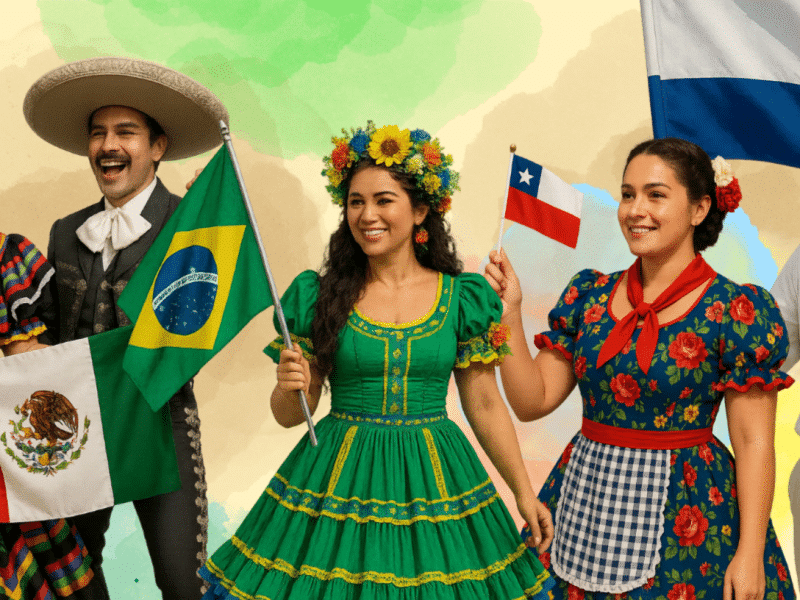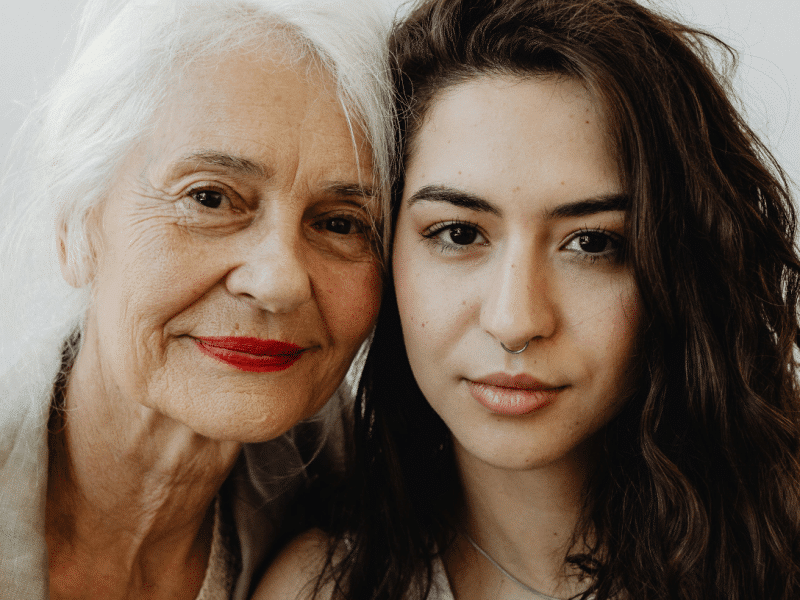Spanglish: A Fluid Language for a Fluid Identity
Ni de aqui, ni de alla – and that’s ok. Languages are fluid, as are people. Sure, there are the language purists who scoff, and that’s ok too. For millions of other U.S. Latinos, Spanglish is a form of communication that reflects the beauty of bi-cultural thriving and owning the new Latino experience.

Spanglish, an inventive mashup of English and Spanish, is a linguistic masterpiece that has been echoing through the corridors of America for years, particularly resonating within bustling communities of Latine populations.
What’s the Origin of Spanglish?
Picture this. It’s the mid-1800s, and the United States is expanding its grasp over territories inhabited by vibrant Spanish-speaking communities, such as California, Texas, and New Mexico. As the Mexican-American War ensues, the need for practical communication emerges between communities, and like water and oil separating in a vinaigrette, the languages refuse to blend. Yet, in the ensuing decades, English and Spanish fused in an unexpected way. However, it wasn’t until the late 1940s that the term “Spanglish” was coined by Puerto Rican linguist and poet Salvador Tió.
This rich linguistic tapestry created fascinating language phenomena, such as calques, loan words, and code-switching. Calques involve translating entire words or phrases from one language to another, resulting in expressions like “llamar pa’ tras” (to call back). Another linguistic influence is the borrowing of words, known as loan words, which occurs when a language adopts terms from another culture to describe previously unfamiliar items or concepts. For instance, the Spanish word “mítin” is borrowed from the English word “meeting.” Additionally, code-switching is a common occurrence, where speakers seamlessly shift between different languages or language varieties depending on the context, environment, and audience, like saying, “she’s my comadre!” versus “she’s my close friend.”
For many, Spanglish is more than a language—it’s a lifeline. It forms a cultural bridge for Latine individuals, tethering them to their Latin American heritage while helping them navigate the waters of an English-centric society. It’s like having a foot in two worlds, giving speakers the flexibility to express ideas or feelings that would get lost in the translation of a single language.
Sure, Spanglish has its fair share of critics, those who argue that it’s diluting English and Spanish and hampering proper learning of these languages. However, research paints a different picture— bilingual and bicultural individuals display cognitive benefits, like heightened creativity and problem-solving skills.
Now, let’s zoom out a bit and look at the bigger picture. Spanglish isn’t just surviving—it’s thriving. It’s embedded in our media, our pop culture, and our everyday lives. You’ll find it in music, movies, literature, even in advertisements. Pulitzer Prize-winning Dominican American author Junot Diaz’s “The Brief Wondrous Life of Oscar Wao” stands as a testament to the power of Spanglish, artfully depicting the immigrant experience in the US. Latine artists like Kali Uchis and Cuco sing the language’s praises, folding it into their lyrics with a profound sense of bilingual pride. Because some things just need to be expressed in Spanish.
Spanglish is more than a mere combination of English and Spanish. It’s a testament to the resilient and adaptable spirit of the Latine community in the US, a multilingual mosaic of a multicultural society. It’s a complex expression of cultural identity that transcends borders. As America continues to grow as a cultural melting pot, Spanglish is poised to rise— not just as a linguistic curiosity, but as an essential thread in the tapestry of cultural expression.




